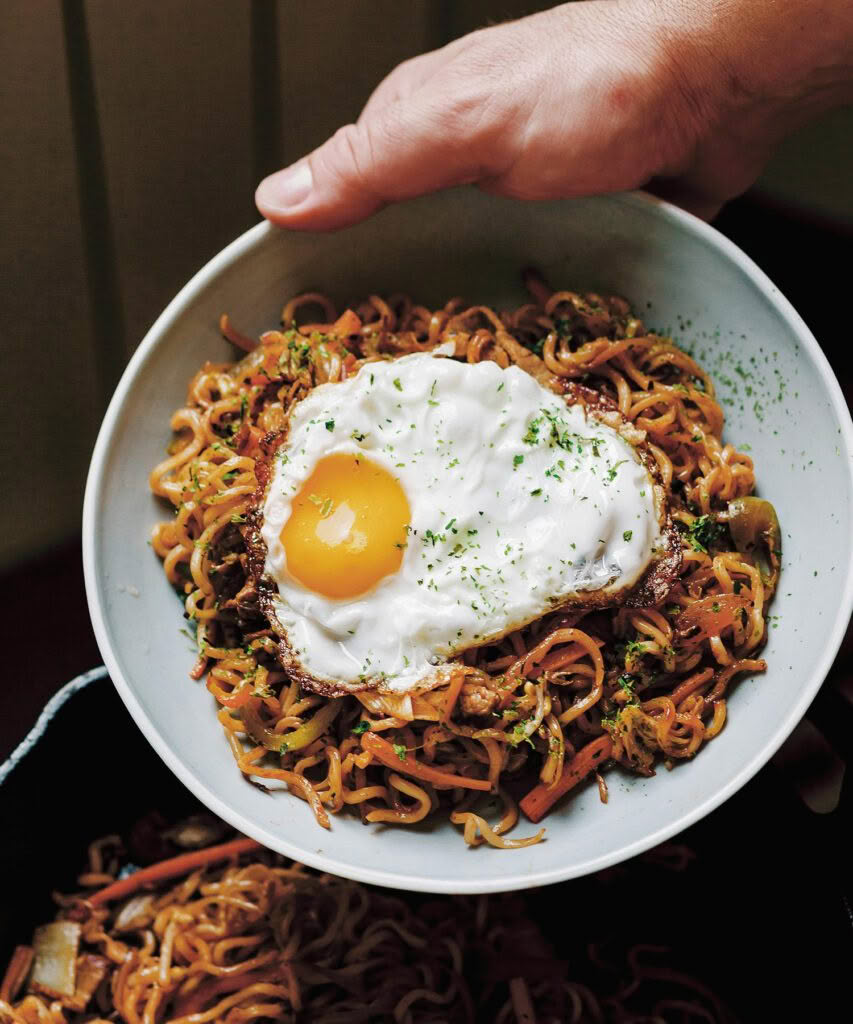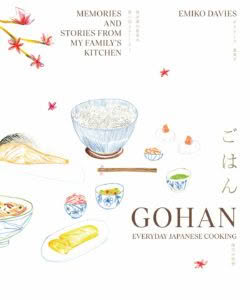Yakisoba Fried Noodles
Emiko Davies

Serves
4Ingredients
| SAUCE | |
| 2 tablespoons oyster sauce | |
| 2 tablespoons tonkatsu sauce | |
| 2 tablespoons tomato ketchup | |
| 1 tablespoon soy sauce | |
| 1 teaspoon sugar | |
| NOODLES | |
| 200g dried ramen noodles (or 500g fresh) | |
| 2-3 mushrooms (shiitake, for example) | |
| 1 tablespoon sesame oil | |
| ¼ head of cabbage, finely sliced | |
| ½ small onion, thinly sliced | |
| ¼ green capsicum, thinly sliced | |
| 1 carrot, peeled and cut into matchsticks | |
| 50g mung bean sprouts | |
| 4 eggs | |
| 1 spring onion, finely chopped | |
| OPTIONAL GARNISHES | |
| beni shoga (red pickled ginger), toasted sesame seeds, aonori (green seaweed flakes) or dried nori seaweed cut into strips, katsuobushi (dried bonito flakes) |
Yakisoba (which, despite its name, is made with ramen noodles not soba noodles) is a dish I grew up on and it makes an excellent weeknight meal – quick, satisfying and something you can make without too many special requirements or with whatever you have in the fridge. Saying that, there are certain vegetables that belong here and give the dish its unique flavour. For me, cabbage is an absolute must, along with the sweetness of carrot. Some types of mushroom, such as shiitake, dried or fresh, or any other Asian mushrooms, such as king brown or oyster, lend a deep flavour. Other seasonal green vegetables, such as peas, green beans or broccoli, are great in here, too. You can even add a small amount of thinly sliced beef, pork belly or even bacon or ham, if you wish. The egg is my favourite part, so I personally never leave it out – sometimes I just scramble it, but a whole fried one is quite irresistible. You can also use udon noodles instead of ramen noodles.
I’ve listed some optional garnishes, but in reality one of them is not an option, it’s a must – beni shoga [red pickled ginger]; these punchy pink ginger pickles are the ultimate foil to the sweet yakisoba sauce!
If you can’t find tonkatsu sauce, you could approximate a pretty good, similar flavour by mixing tomato ketchup, Worcestershire sauce, oyster sauce and some sugar or honey.
Vegetarians only need to leave out the oyster sauce and perhaps balance out with the sugar (I quite like brown sugar in this case).
View the recipe collection here
Instructions
| 1. | Combine the sauce ingredients and set aside. |
| 2. | If using dried noodles, boil as instructed on the packet and drain. |
| 3. | Blanch fresh noodles in boiling water for 30 seconds, then drain. |
| 4. | For both, shock the drained noodles in a bowl of cool water, then drain again. Set aside. |
| 5. | If using dried mushrooms, leave them to soak in hot water until they are ‘revived’ and soft, about 20 minutes. Slice thinly. |
| 6. | Heat a wide pan or wok over a medium-high heat with half the sesame oil. |
| 7. | Add the cabbage, onion, green pepper, carrot and mushrooms, and toss, cooking until the cabbage is wilted and the carrot cooked but still with a bit of bite, about 7 minutes. |
| 8. | Tip in the noodles and mung bean sprouts, followed by the sauce. |
| 9. | Toss everything together for a moment, until the sauce coats the noodles. |
| 10. | You may need to add a dash of water to keep it shiny. |
| 11. | Remove from the heat but keep warm while you fry the eggs in the rest of the sesame oil for 1-2 minutes, or until the edges are frilly and the whites are set but the yolk is still runny. |
| 12. | Serve immediately with the chopped spring onion, garnishes of choice and the fried egg on top. |
 This is an edited extract
This is an edited extract
from Gohan by Emiko
Davies, published by
Smith Street Books,
distributed by Thames
& Hudson Australia,
NZD$55, available
now. Photography ©
Emiko Davies, Hana
Davies & Yuki Sugiura
